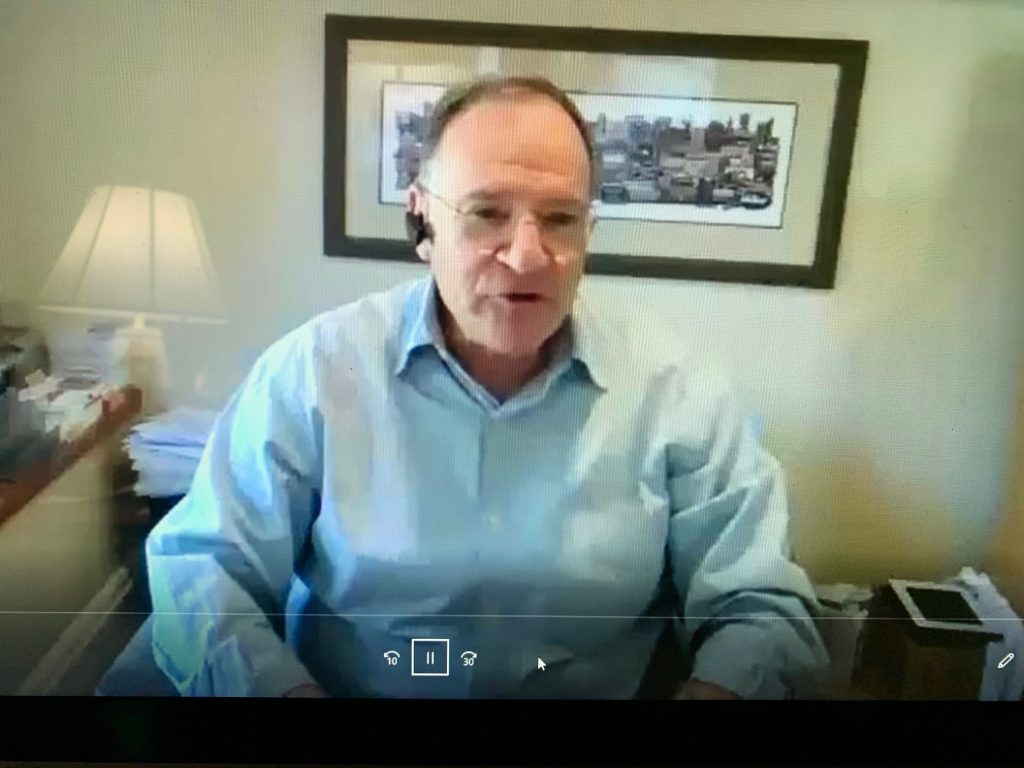KEYBANC EXECS ON HOLIDAY SELLING


At a recent Retail Marketing Society (RMS) seminar, RMS president Richard Baum kicked off the Zoom meeting by introducing the KeyBanc team of equity research analysts who study businesses from an investment perspective. Ed Yruma started off by listing factors impacting sales now: less traffic at physical stores, five-year gains in e-commerce, lack of second stimulus payments affecting mid- and lower-income consumers, and fundamental changes in consumer shopping behavior. He called out Amazon, a holiday winner for the past 15 years, to continue strong.
While many retailers face problems with transportation and deliveries, Amazon remains confident about their fleet and logistics. Walmart and Target have done well with in-store pickup, but the financial health of their middle America shoppers is uncertain.
Yruma also spoke of generally weak year-to-date apparel trends (admitting that, although not visible on Zoom, he was actually wearing shorts at this presentation) and a struggling mall environment. On the plus side: health and wellness, athleisure, hand-crafted gifts, and Peloton (one of KeyBanc’s top picks!) Also on the plus side: Farfetch, whose momentum has been accelerated by a positive trend in luxury business.
Brad Thomas, KeyBanc’s associate director of research, noted a 7.9 percent unemployment rate and consumer confidence at around 100 as good signs for holiday. Savings are up thanks to the pause in spending during the shutdown. Share of wallet has shifted with consumers not spending on hotels, planes, and restaurants. (Credit card data indicates Americans will save $500 billion not getting on planes!) Greater disposable income will be spent on home improvement: furniture, mattresses, consumer electronics. Cooler weather will boost sales of video games and electronic entertainment. More money will be spent on pets. But bottom line, holiday sales will not exceed third quarter. With consumers looking for value, Dollar stores should do well; a lot will depend on a second round of stimulus payments. And while retailers say they’re seeing some great close-out buys, there are less off-price goods available than six months ago.
Matt DeGulis stated that while it’s tough to predict soft lines, he’s estimating a 10 percent decline in fourth-quarter revenues, citing both Under Armour and Wolverine in worse shape fourth quarter than third. Amazon’s Prime Day, he observed, was clearly disappointing.
Overall, the average decline could exceed 10 percent with some notable exceptions, e.g. Coach, a brand well-positioned in China, and Bath & Body Works, part of the nesting trend. Margins could also prove problematic, with headwinds based on expected shipping surcharges and higher return rates. Bottom line: while holiday sales will be far from stellar, they could turn out better than projections from June and July which is why certain stocks are up. Most companies have focused on liquidity and curtailing operating costs.
Brent Andress, whose focus is toys and leisure, touted the new bike and new treadmill from Peloton. He believes the Outdoors trend will boost purchasing of things like golf equipment and coolers and that, now more than ever, parents will buy stuff to keep their kids occupied. Toys will be more classic (Hot Wheels, Barbie) than entertainment-driven (Star Wars, Frozen). And while spending is shifting to e-commerce, Target, Walmart, and Best Buy will be fine.
For more info on RMS upcoming seminars and events: retailmarketingsociety.org.






